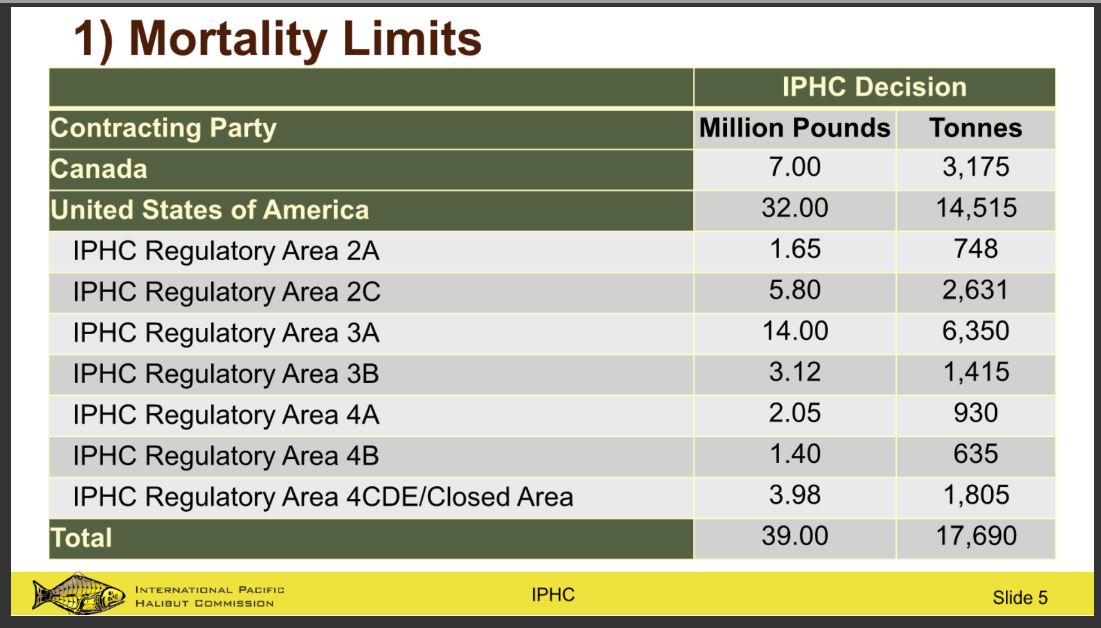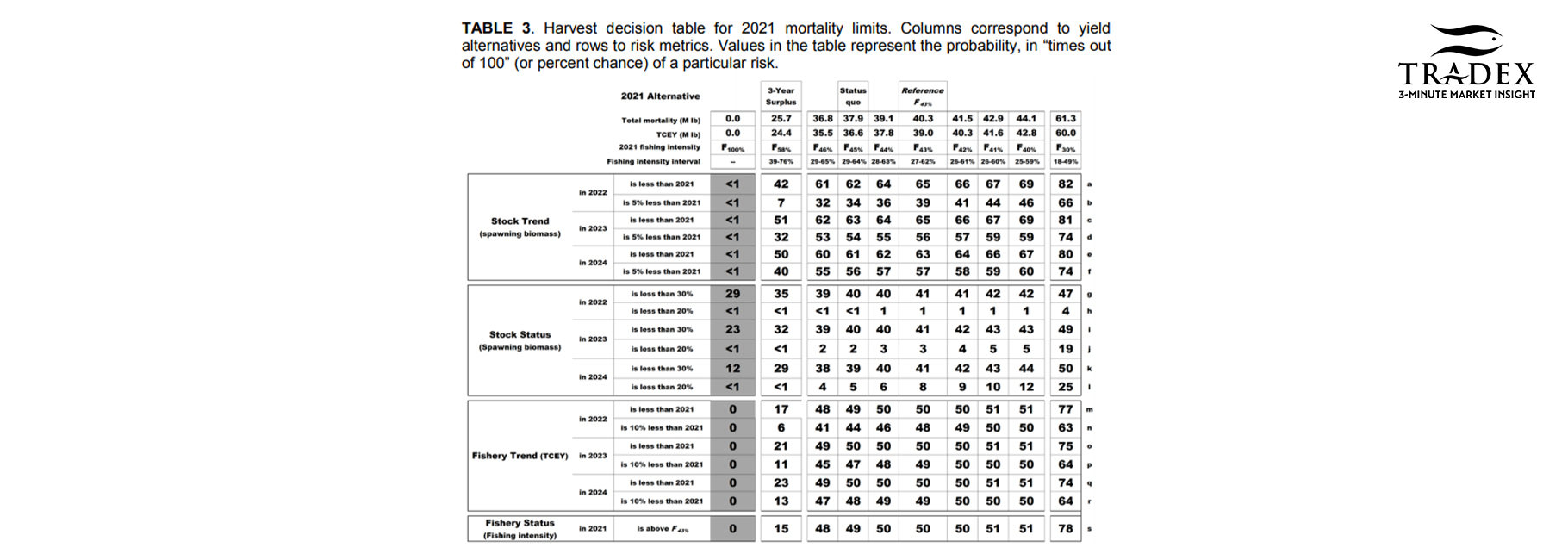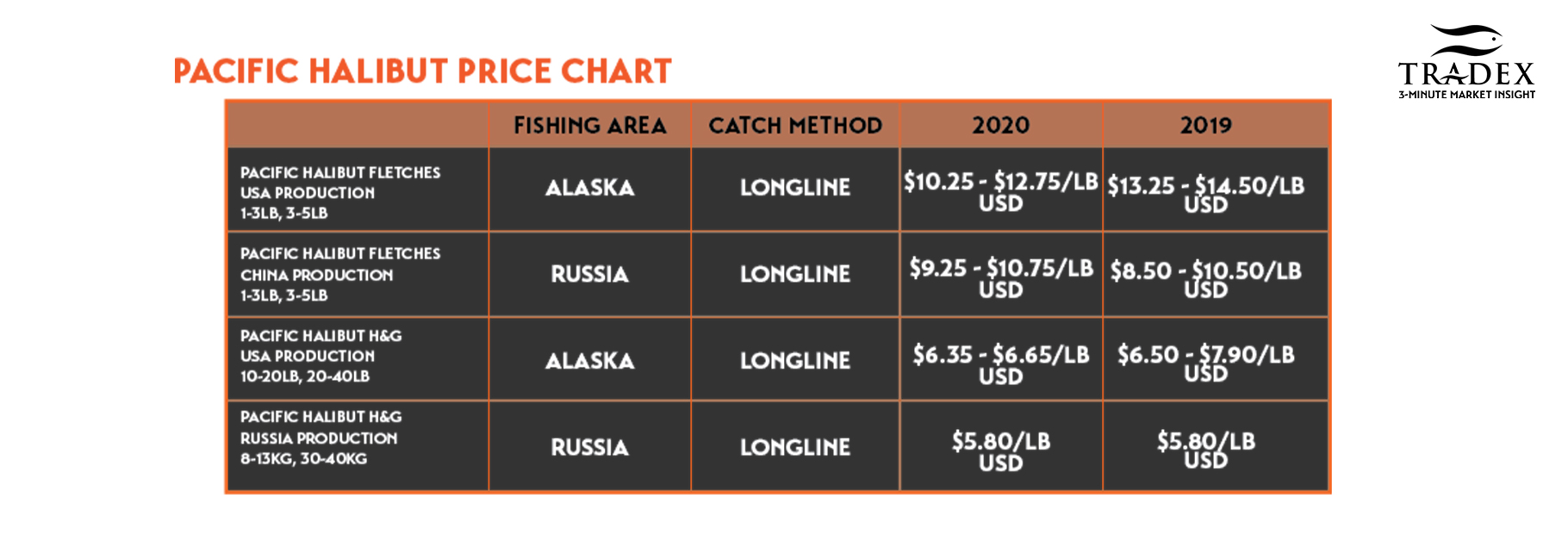
Loading
EP 522 | AIRED 01/25/2021
Pacific Halibut Update: 2021 Fishery Limit, a 2020 Season through a Pandemic, Stabilized Pricing and Increased Demand
January 29, 2021 Update: The International Pacific Halibut Commission has confirmed this morning during day five of their Annual Meeting that the 2021 TCEY for the Pacific Halibut Fishery to be set at 39 million lbs - inline with what was reported on our Monday January 25th episode below. The Commission also acknowledged they will be considering the opportunities of a year-round fishery.

January 25th, 2021--- This week we sneak in a Pacific Halibut update just days before the International Pacific Halibut Commission is set to reach a decision on the fishing limits for the 2021 Commercial Pacific Halibut Fishery.
--- At an SPR level of 43 percent, the 2021 Total Constant Exploitation Yield (also known as the TCEY) would equate to 39 million lbs - an increase when compared to the previous three seasons.

Through the IPHC’s Management Strategy Evaluation process, a coastwide fishing intensity corresponding to an SPR of 43 percent has been found to meet the Commission’s objectives of avoiding stock sizes that would be associated with conservation concern, maximizing fishery yield and minimizing fishery variability.
There are many factors the Commission will consider this week during the IPHC's 97th Annual Meeting before reaching a final TCEY value which will be made Friday January 29th.

We caught up with IPHC Executive Director David Wilson last week for his comments on how the 2020 fishery went with a season that proceeded through a pandemic and also for comments on the upcoming 2021 season.
He goes on to say...
“In 2020, total Pacific halibut mortality due to fishing mortality was down to 35.50 million pounds from 39.87 million pounds in 2019. Of that total, 84 percent comprised the retained catch (just under 25 million pounds), up from 81 percent in 2019, meaning that there was less incidental mortality in 2020. The COVID-19 pandemic placed some unique operating challenges on the fishery, including our own research platform, the IPHC Fishery-Independent Setline Survey (FISS). In particular, the need to place vessel crews and IPHC field staff into quarantine both before and after each trip added significant costs. These added operational expenses, combined with fish prices being around 15 percent lower than in 2019, meant that ourselves and commercial operators needed to plan and deploy fishing operations in a more measured manner.”
“Looking ahead to the 2021 fishing period, we are hopeful of an improved operating environment that will include an increased domestic demand for Pacific halibut as the fish of choice for restaurant table throughout Canada and the USA.”

--- Moving onto market info and inventories of Halibut continue to be short and pricing is anticipated to continue to rise over the next month or so leading to the March opening of the new 2021 Halibut fishing season.
As mentioned by Dr. David Wilson, Halibut pricing was around 15 percent lower than in 2019 however the industry is hopeful for a year with stable prices and increased demand.
Our recommendation continues to be to get your Halibut program in order as an upward price trend is anticipated due to more demand from the economical revival of foodservice in the US and the potential for a shortage of Russian Halibut raw materials.
On a side note on Russian Halibut, an estimated 24 million lbs was harvested in Russia's Far East in 2020.

Advertise Here: advertising@tradexfoods.com
--- As a final note on the stock status and distribution of Pacific Halibut and the Scientific Advice from an IPHC 2020 Stock Assessment report determined that the stock is considered to be ‘not overfished’.
and the proportion of the coastwide stock represented by Biological Region 3 has been largely decreasing since 2004 and increasing in Biological Regions 2 and 4.
However, there was an increase in Biological Region 3 in 2020 and a decrease in Biological Region 2.
Biological Region 4 is near the historical high estimated for 2019, and has shown an increasing trend since the early 1990s.
--- If you are not already, be sure to subscribe to our 3-Minute Market Insight using the signup form below to keep tuned-in to all upcoming market insights.


